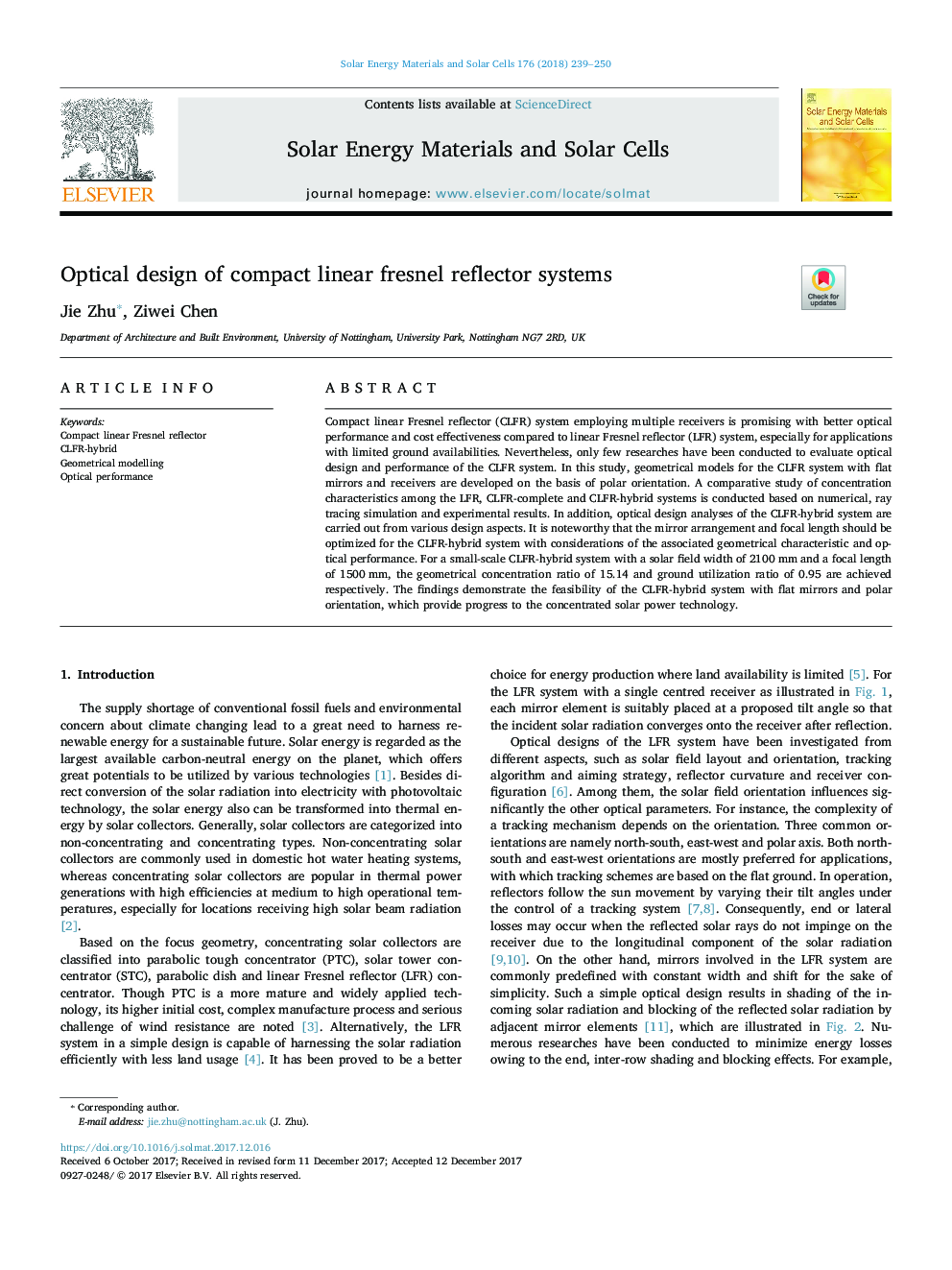| Article ID | Journal | Published Year | Pages | File Type |
|---|---|---|---|---|
| 6534452 | Solar Energy Materials and Solar Cells | 2018 | 12 Pages |
Abstract
Compact linear Fresnel reflector (CLFR) system employing multiple receivers is promising with better optical performance and cost effectiveness compared to linear Fresnel reflector (LFR) system, especially for applications with limited ground availabilities. Nevertheless, only few researches have been conducted to evaluate optical design and performance of the CLFR system. In this study, geometrical models for the CLFR system with flat mirrors and receivers are developed on the basis of polar orientation. A comparative study of concentration characteristics among the LFR, CLFR-complete and CLFR-hybrid systems is conducted based on numerical, ray tracing simulation and experimental results. In addition, optical design analyses of the CLFR-hybrid system are carried out from various design aspects. It is noteworthy that the mirror arrangement and focal length should be optimized for the CLFR-hybrid system with considerations of the associated geometrical characteristic and optical performance. For a small-scale CLFR-hybrid system with a solar field width of 2100Â mm and a focal length of 1500Â mm, the geometrical concentration ratio of 15.14 and ground utilization ratio of 0.95 are achieved respectively. The findings demonstrate the feasibility of the CLFR-hybrid system with flat mirrors and polar orientation, which provide progress to the concentrated solar power technology.
Related Topics
Physical Sciences and Engineering
Chemical Engineering
Catalysis
Authors
Jie Zhu, Ziwei Chen,
